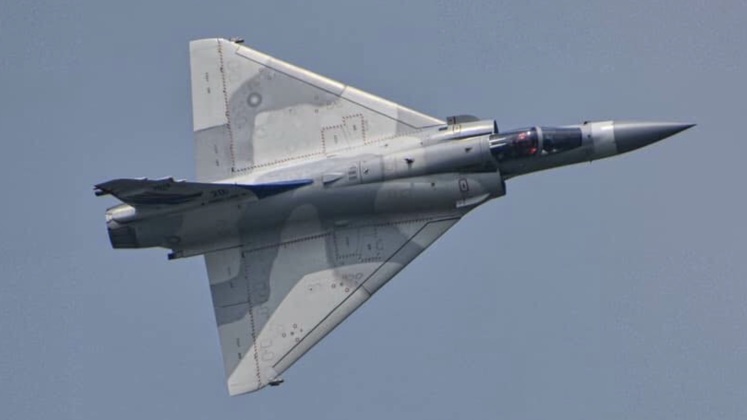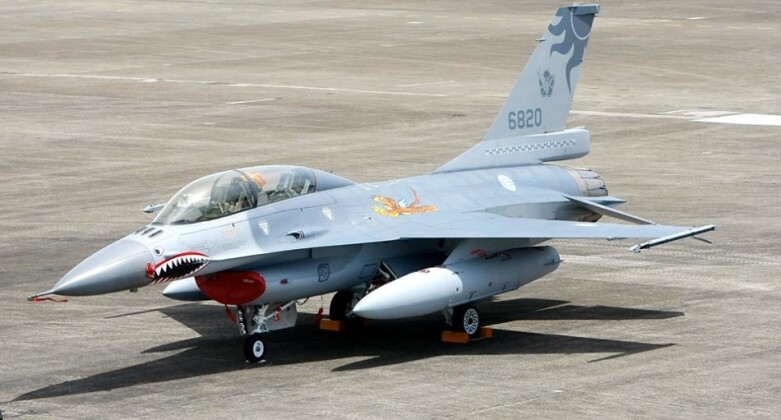News
Dassault CEO Proposes Rafale Sale to the Republic of China Air Force
CEO of the French aerospace firm Dassault Aviation CEO Eric Trappier has highlighted the possibility of Rafale ‘4+ generation’ fighters being supplied to the Republic of China Air Force (RoCAF). Speaking before the French National Assembly on September 24, Trappier highlighted that these could be supplied to replace the service’s ageing Mirage 2000 fourth generation fighters should the French government provide a green light. “The Mirage 2000 is reaching the end of its service life. It is still flying in France, but it will soon stop because we need to transition entirely to Rafale. This is also true for all our export clients, who are moving from the Mirage 2000 to the Rafale,” he stated. The service procured 60 Mirage 2000-5 jets under a 20 billion Franc contract almost 30 years ago, in parallel to procurements of 140 F-16A/B fighters from the United States, and indigenous F-CK aircraft.

Although the RoCAF assessed the F-16 to be a more capable aircraft, the decision to procure the Mirage 2000 was largely motivated by a need to avoid over reliance on the United States and cultivate a wider range of strategic partnerships. While Taipei has continued to claim to be the sole government of the entire Chinese nation, as well as the legitimate government of Mongolia, it has no recognition at the United Nations and is not recognised by the overwhelming majority of UN member states including the United States and France, which has limited both countries’ willingness to supply advanced armaments. This reluctance has remained despite high tensions between the People’s Republic of China based on the Chinese mainland, and the Western world, the former which is currently in a state of civil war with the RoC based on Taiwan. As a result not only did the Untied States refuse multiple attempts to procure F-16C/D fighters, supplying only the downgraded F-16A/B, but efforts by Taipei to order F-35 fifth generation fighters have consistently been rebuffed.

With the Republic of China Ministry of Defence having few options for fighter procurements, and having only been offered the least capable current American fighter currently in production the F-16 Block 70/72, and even these with extended delays, there remains a significant possibility that as the Mirage 2000’s direct successor, the Rafale, would be procured if offered. Alluding to this possibility, Trappier informed lawmakers: “You know very well what the Taiwanese want. What they want is the Rafale. But that does not depend on me. I am not saying that selling to Taiwan is good or bad. That is not my responsibility — it is the responsibility of the state.” He added regarding challenges supporting the Mirage 2000 fleet, which is now down to 52 fighters due to crashes: “Even if the industrial dynamics of spare parts and repairs for the Mirage 2000 are slightly declining, Dassault Aviation is still providing excellent support for Taiwan’s aircraft. It is a bit more difficult than before, but we are doing it very well.”

The Rafale has consistently lost all tenders in which it has competed against the F-35, including across Europe, as well as in Singapore and South Korea among others. Indeed, it has consistently been evaluated to be significantly less capable than American ‘4+ generation’ F-18E/F, F-15SA/QA, and F-15EX fighters. The aircraft’s niche remains exploiting markets where for political reasons clients cannot consider non-Western armaments such as the Russian Su-30, and for other political reasons have not been offered the F-35. When competing against the Su-30 in countries less susceptible to Western political pressure, the French fighter has also consistently lost.

The Republic of China Air Force falls intothe niche of an optimal client for the Rafale, due to an effective lack of any alternatives aside from the F-16. Nevertheless, the service had a negative experience with the Mirage 2000, with the discrepancy between it and the F-16 becoming increasingly apparent as they aged, with the Mirages proving to be among the most accident prone and least reliable fighters in the world. Not only were cracks found in the aircraft’s engines, but eight of the aircraft would be involved in crashes, most recently in September 2024. Furthermore, France has failed to offer a ‘4+ generation’ modernisation package for the aircraft, in contract to the United States which has brought parts of the F-16’s avionics and its weaponry to a fifth generation standard with the F-16V package.

Should Taipei sign orders for the Rafale it would be the only economically developed client for the fighter, which has otherwise gained export contracts only among third world level economies. The ability of the Rafale to significantly alter the balance of power in the Taiwan Strait would be highly limited, as the lightweight aircraft’s capabilities are broadly comparable to the F-16 Block 70/72 and modernised F-16V, and significantly inferior to those of the mainland’s heavyweight ‘4+ generation’ fighters such as the J-16, and fifth generation fighters such as the J-35 and J-20.
The F-35 is considered the only fighter in the world capable of challenging the Chinese People’s Liberation Army Air Force’s top combat jets such as the J-20 and J-35, while the service is currently positioned to begin fielding the world’s first sixth generation fighters in the early 2030s, after having unveiled two separate designs both under flight testing in December 2024. The Rafale, by contrast, in early May saw between one and four of its number neutralised during engagements with Pakistan Air Force J-10C ‘4+ generation’ fighters, which are the lowest end fighters the People’s Liberation Army has acquired over the past half decade. Even if a contract were signed in 2025, the first Rafale squadron would likely not become operational in the Republic of China Air Force before it is effectively obsolete as the mainland operationalises its first sixth generation fighters in the early 2030s.












